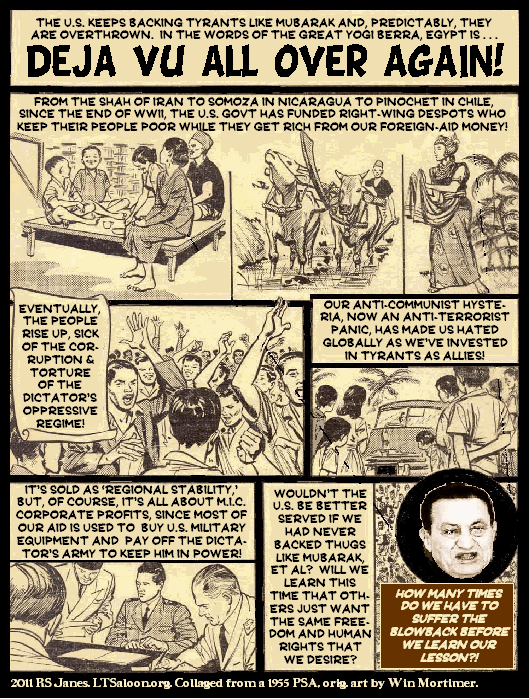I hate air travel. If you can’t sleep on a plane, then you’re screwed. But on my flight down to Tierra del Fuego this week, I flew into Buenos Aires — and learned a lot.
The first thing I learned was that you no longer have to go through those awful body-scanning machines at either SFO or LAX. “We don’t have them at this terminal’s security checkpoint,” a really nice TSA worker told me, “but if you really want to go through one, I think there is one over at some other terminal somewhere.” Er, that’s okay.
Second, I once again learned that the more tired I get, the less likely I am to be able to get to sleep — and so after three sleepless nights spent on planes and in airports, I found myself wandering around Buenos Aires like a zombie.
Buenos Aires is called the “Paris of South America”. It’s a beautiful European-designed city with historical architecture that will knock your eye out. And they just re-opened the famous old Colon opera house after giving it a 100-million-dollar rehab. Built in 1909, it rivals La Scala for both opulence and acoustics. Just seeing it was worth this whole trip. However, I toured it with eyes sagging and looking pretty much like a bum.
Third, I learned more about Argentina’s tragic military take-over in 1976. “After Juan Peron died,” I was told, “his third wife – not the wonderful Evita but the one who used to be an exotic dancer – turned the reins of government over to the military. But while the military was good at building its power-base, it was not good at running the economy.”
Not only that but the military was used to fighting wars, and so it did what a military organization does best, and began a military operation against its opposition and started a war on Argentina’s citizens — sort of like a PATRIOT Act gone wild. And the predictable result was a reign of terror and disaster.
Eventually the US-backed Argentine military was forced to step down and then the new government cut back the military’s funding drastically, so that it would never be able to meddle in Argentina’s politics again.
But even in my sleep-deprived stupor, I was still able to wonder what would happen if the new US-backed Egyptian military regime also made this same mistake – and started to make war on its own citizens too.
“That will never happen,” I was told. “World-wide human rights organizations are too strong now to let a tragedy like that ever happen again. Yeah right. Just like they stopped human-rights abuses, torture and renditions from happening in US-backed present-day Iraq, Afghanistan, Yemen, Saudi Arabia, Israel-Palestine, Mubarak’s Egypt and Tunisia — not to mention former US-backed dictatorships in Iraq and Iran.
PS: I also got to visit the tomb of Evita Peron again yesterday. http://subversify.com/2010/01/08/live-from-argentina-sarah-palin-is-no-evita/. Back in the 1950s, she and her husband changed the entire face of Argentina by helping to develop a much larger middle class. And another of the major things that they did was to make all public universities in Argentina free for anyone who wanted to attend.
Unlike in America today, there is no war on students in Argentina. http://www.smirkingchimp.com/thread/mike-whitney/34172/the-student-loan-swindle-an-interview-with-professor-alan-nasser
PPS: I just learned that there is going to be no internet access when I get to Antarctica! What am I going to DO for two weeks! I’ll get withdrawal symptoms! I’ll start having nightmares about freelance unpaid penguins blogging for the Huffington Post!





Did GWB predict the Middle East uprisings?
Photographers who always have a small digital camera in there pocket might fully appreciate more fully the convenience of the digital camera if they had used a 4X5 Speed Graphic camera in college to get “grab shots.” These days the term “grab shot” will probably conjure up a hypothetical image of some boisterous conduct that gets posted on Facebook, but back in the day it symbolized a concept that was part of the Advertising vs. Photojournalism debate.
Henri Cartier-Bresson was famous for taking “candid” shots that were as dramatically different from the ones in the ads as were the stogy Hollywood films that used rear screen projection shots for car ride sequences and the same chintzy sets over and over again versus the “Johnny on the spot” newsreels that capture history in the making.
Photographer Bert Stern revolutionized photography by taking one photo of a Martini. He went to Egypt to take a photo of a Martini with one of the iconic pyramids in the background, for Smirnoff.
Back then, boys and girls, there were only a small number of darkroom wizards who could manipulate an image well enough to make it look completely natural. Today, through the magic of Photoshop, a college level student can whip together a photographic image that is both realistic and notable because it defies logic. The thought of paying a name photographer to take an all expenses paid trip to the Cairo area just to come back with an image of a glass full of booze and one of those “how did they do that” upside down stone cone buildings in one frame would be über-laughable. (Will the Internets make umlauts obsolete?)
About a year ago this columnist bought a Nikon Coolpix and has carried it everywhere. The fact that it is getting pretty beat-up brings to mind an opportunity to inject this bit of arcane and esoteric photographic nostalgia: Among photojournalists who had the black finish Nikon F cameras there was a bit of macho competition to see which photographer had worn through the black and was showing the most brass.
In the intervening year, we have taken approximately 7,000 pictures. In the old day, a roll of color slide film (We mourn the passing of Kodachrome) and developing would run a fellow about $10. Using the old rounding off dodge, that would mean (at three rolls per 100 images) 3 X 70 X $10 = $2,100. Whew! Did we save some major bread or what?
We could get a chance to maybe get a newsphoto in San Francisco on the night of Wednesday, February 16, 2011, but why bother?
In a perverse bit of logic, we would rather spend the funds necessary to get some images at this year’s installment of the 24 hour race for sports cars at Le Mans. At first glance that don’t make sense, but since the Internets is changing things (and messing with proper English?) it may hold up under closer scrutiny.
If a fellow was a newspaper photographer and his roommate was the sports editor, maybe he could go take photos of the Saturday night high school basketball game (the editor didn’t have to go because he could “call the coach Sunday night” for a story in Monday’s paper) in return for doing less of the household chores. It doesn’t mean earning any overtime but it does make sense, n’est-ce pas?
If a news photo isn’t salable and if the only criterion is personal satisfaction, Le Mans, here we come!
Here’s an added bit of rationalization: A photo of the local sports scene doesn’t have much appeal for use on a website specializing in national and international issues, but pictures of (hypothetical example) newspapers featuring a picture of an American politician on the front page of newspapers being sold in a Paris news kiosk, might.
(We did take some shots of a particularly promising pitcher at Santa Monica High, some time ago. Where did we file those old negatives of the Baseball’s Hall of Fame guy named Tim Leary?)
In the old days a “stringer” might spend the entire day trying to get a good B&W (Does Kodak still make Panotomic X?) photo and getting it to a wireservice and selling it outright for $25. These days if a photographer gets a photo of local interest [say a shot of the Mog truck from Oregon] he apparently can’t offer the same picture to two local competing Internets web sites. It seems that you can let one or the other use it for free, but not both.
Speaking of “things have changed,” does any young blogger know how to do a “hed count”? Why do newspaper headline writers prefer words with “l’s” and “i’s” over words with “w’s” and “m’s”?
According to a reliable source, the major league pitcher “Dizzy” Dean used to pause, while he was at work, and watch planes fly over the stadium. Idiosyncratic personalities with “a unique voice” were thought to be the promise of Internets democracy. As the corporatization of the web continues, the homogenization of the voices becomes more prevalent.
If a rogue blogger asks: “Did the turmoil in Egypt validate George W. Bush’s claim that invading Iraq would create a demand for democracy in the Middle East” will it call to mind the tree falling in a forest with no humans around? Even Conservative pundits may want to ignore that idea and hold it as a trump card to be played later in the game. Such as when it may be a part of the JEB strategy to promote the idea that Obama fumbled the ball and that the George W. Bush strategy for the Middle East was “spot-on.”
Heck, if the Egyptian military seizes power and props up a new dictator, JEB might assert that all that was Obama’s fault. That will come later, not now. It’s too early to bring that up.
Whoops! This is supposed to be a column about photography in the digital age. Pardonez moi, eh?
We did get a picture of a very intense conversation for the college yearbook using the aforementioned 4 X 5 Speed Graphic and we thought: “Who needs a Leica? (Isn’t it curious that the 35mm brand name is challenged by Word spell-check?) Henri Cartier-Bresson, eat your heart out!”
After college folks used to comment that the Nikon FTn was too heavy. Not after using a camera that used film holders, it wasn’t. However, it is rather convenient to have what amounts to a portable Sixties photo studio fit comfortably into the pocket of your jeans.
Someday, we may learn the html mumbo jumbo incantation necessary to make a photo appear in a column, but for now the best we can do is link to our photo blog.
Now, the disk jockey will play the song “Kodachrome,” the “Grand Canyon Suite” and “the Stripper.” (Will anyone realize that offset printing required stripping negatives?) Now, we have to take the Coolpix and go wander around aimlessly looking for some digital photo ops. Have a “regional split” type day.